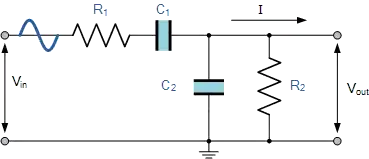After some further research, I've decided to answer my own questions
as I find the current answers insufficient. Evidently the "best" antenna also seem to be the simplest.
From the article:
"Antenna 101: Let’s Review the Basics" by Dan Farber (AC0LW) in the
magazine The Spectrum Monitor [July, 2016].
Consider once again the humble dipole. In its most basic form, it is
cut to resonance at a desired frequency in a single band, and fed with
coaxial cable. Notice that one side of the dipole is thus connected to
the coax’s shield. Down at the radio end, the coax shield is connected
to RF ground, that is to say the grounded side of the coax connector.
This works fine with no additional RF grounding.
This and the well known fact that the impedance of a:
1/4-wave vertical with good RF ground is ~35 Ohms.1/2-wave dipole is ~70 Ohms.
This matches very well with the GPIO impedance that is believed to be
somewhere between 30-60 Ohms. (How to test?) Thus we can expect a natural impedance matching, or at least close enough, which is probably why these simple wire antennas work so well.
So as noted by the commenters in this link, a simple 1/4-wave wire with
a 1/4-wave ground along the table, will be quite efficient. The wires also
has to be electrically isolated, to help prevent possible static damage.
How to best prevent GPIO ESD damage?
There are several ways applicable here:
- Use a ESD/TSV chip such as the TPD1E01B04 with Cio=0.2 pF.
- Use a simple resistor with R >= 100 K Ohms.
Use an inductor or inductive coil with X >= 100K @ 100 MHz.
In each case you should connect the part between the antenna wire
and device GND. Please see THIS excellent blog about how to prevent static and lightning damage.
WARNING I now recommend against using an inductor only, as it would force ground the GPIO pin, if set to 1 at DC during any other time, before the HF has been activated. This would surely damage your RPi.
A simple band-pass filter
The construction of a passive Band Pass Filter can be seen HERE and another filter is very nicely described HERE. In the video he uses the following values, but can probably be tuned even more.
Cgnd = 10 pF
Cio = 2.2 pF
Rgnd = 1 K

(Same as in video, if R1 is removed.)
To amplify the GPIO signals
Please look at THESE RPi GPIO driver aspects.
NOTE-1: For those concerned about the transmitted power, I've estimated it to be about 0.37 mW in THIS answer.
EDIT-1: I've found a few more excellent resources that explains exactly how this should be done.
The first one is: QRPi - A Raspberry Pi QRP TX Shield Design, from where:
However there were still one thing missing: no buffer stage to protect
the BCM2835 SoC's clock generator output stage. Hardware failure due
to the unbuffered operation of the WsprryPi program was reported by a
few HAM operators, possibly due to overload from nearly broadcast
transmitter stations. If buffer amplifier was already needed it was a
good idea to add some gain to the system. Eventually using a single
FET amplifier stage [fig 7] 10 dB gain achieved, delivering +20 dBm
output power at the end of the LPF [fig 4]...
For ESD and static discharge protection an ESD suppressor diode was
added to the antenna terminal of the circuit.
The other ones are:
There are several great links to filter, amplifier and buffer designs there. In addition, a simple design can allow you to transmit in the 20m HAM band several thousands of kilometers. Amazing.
The GitHub README from the last link, basically concludes all my original questions:
As the Raspberry Pi does not attenuate ripple and noise components
from the 5V USB power supply, it is RECOMMENDED to use a regulated
supply that has sufficient ripple supression. Supply ripple might be
seen as mixing products products centered around the transmit
carrier typically at 100/120Hz.
DO NOT expose GPIO4 to voltages or currents that are above the
specified Absolute Maximum limits. GPIO4 outputs a digital clock in
3V3 logic, with a maximum current of 16mA. As there is no current
protection available and a DC component of 1.6V, DO NOT
short-circuit or place a resistive (dummy) load straight on the
GPIO4 pin, as it may draw too much current. Instead, use a
decoupling capacitor to remove DC component when connecting the output
dummy loads, transformers, antennas, etc. DO NOT expose GPIO4 to
electro- static voltages or voltages exceeding the 0 to 3.3V logic
range; connecting an antenna directly to GPIO4 may damage your RPi
due to transient voltages such as lightning or static buildup as
well as RF from other transmitters operating into nearby antennas.
Therefore it is RECOMMENDED to add some form of isolation, e.g. by
using a RF transformer, a simple buffer/driver/PA stage, two
schottky small signal diodes back to back.
